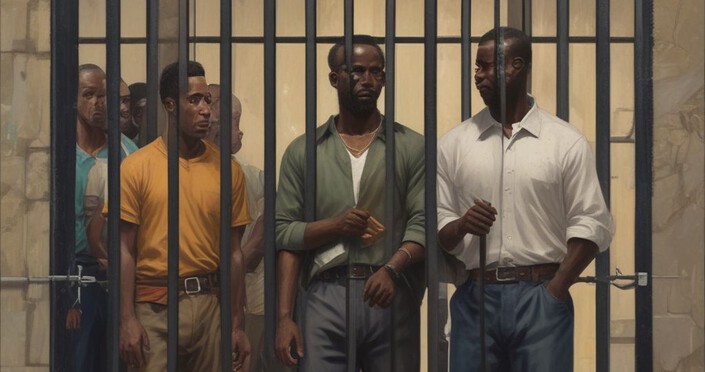Racial Disparity in Imprisonment

Strategies Implemented to Address Racial Disparity in Imprisonment
The United States of America is one of the countries that has high racial disparity in imprisonment in the world. The gains in economic prosperity are not however equally shared across the society. This is basically because the segments of the American communities have been highly side-lined (Bonnie, 2013). Writers who offer law essay help at Edudorm essay writing service notes that one of the major feature of this marginalization is the dissimilar treatment of people according to their color, which occurs in the judicial systems of the U.S. The judicial criminal system of the U.S mainly favors the whites as opposed to African Americans. There is an uneven racial representation in the Juvenile Justice system, and the adults in prison, this therefore makes one to wonder there is fairness in the U.S.
Racial Disparity in Imprisonment is a Crisis in the US
Racial disparity in imprisonment has been recognized as a crisis by the federal governments. In the year 1988, the senate amended the Juvenile Justice and Delinquency Prevention Act of the year 1974. This bill was amended in order to allow the states to be able to participate in the Acts formula grants which is a program, which is responsible for addressing unequal imprisonment of ethnic minority youths imprisoned in secure facilities. The act requires the states to assess the level of imprisonment of the minority youngsters (Bonnie, 2013). Experts who offer law dissertation writing help at Edudorm essay writing service indicates that moreover, the states were also required to come up with strategies which can reduce unequal minority representation where it was found to exist. In the year 1991, the Disproportionate Minority confinement was created in order to enable the states to be able to observe different approaches of the issue by the Juvenile Justice Office.
The National Criminal Justice Act (NCJA) Addressing Racial Disparity in Imprisonment
In the year 2009, two similar bills were introduced in the congress in order to address the underlying problem of racial disparity in imprisonment. The National Criminal Justice Act (NCJA) of the year 2009, which was presented by Senator Webb, was a bilateral bill which created a commission responsible for reviewing the criminal Justice systems. The led committee consisted of eleven members who were appointed by the president, the minority and the majority leaders of the senate, the speaker and the Minority front-runner of the house (Bonnie, 2013). Authors who offer legal case study help at Edudorm essay writing service points that the Republic and Democratic governors also participated in the appointment, since their chairs appointed the members too. The main objective of the commission was therefore to reviewing, making recommendations, and finding about the racial disparity in imprisonment in the country. This move was mainly aimed to creating equality in the judicial systems thus ensuring fair treatment for all.
Justice Integrity Act
The second bill, which was the Justice integrity Act, was also introduced to the senate in the year 2009. The main objective of the bill was to find the major mistrusts in the justice systems and racial disparity in imprisonment, thus creating programs responsible for dealing with the issue in ten districts in the U.S. The bill was later implemented since it took care of the interests of both races in the country (Bonnie, 2013). Tutors who offer constitutional law assignment help at Edudorm essay writing service acknowledges that the bills objective was to look at the main problem that faces the judicial systems and thus leading to unfairness in the criminal justice systems and racial disparity in imprisonment in the country. The three bills, were therefore very effective after their implementation since the country has been able to look into this matter carefully simply because it is a matter of concern which could lead to war in the U.S. These bills have really helped in ensuring fair judgement in the criminal justice systems in the U.S.
References
Bonnie, R. J., National Research Council (U.S.)., National Research Council (U.S.)., & National Research Council (U.S.). (2013). Reforming juvenile justice: A developmental approach.


